Blockchain oracles, for those who are unfamiliar, are simply a third-party service that aids smart contracts by obtaining outside, real-world data necessary for their correct operation.
This article will examine two of the most prominent blockchain oracles currently being developed, Band Protocol Vs Chainlink.
Overview
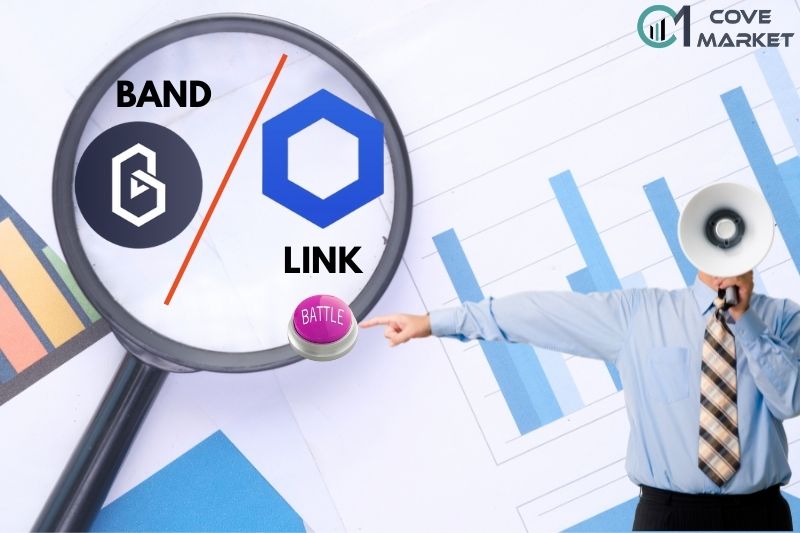
What are Decentralized Oracle Networks?
Decentralized oracle networks, or simply decentralized oracles, are collections of autonomous blockchain oracles that supply the blockchain with outside data. Data is independently retrieved from multiple off-chain sources by each independent node (oracle).
When it locates the data that smart contracts need, it retrieves it, verifies its validity by comparing it to the data retrieved by other oracles, and then transmits it to the contract.
What is Band Protocol (BAND)?
A cross-chain data oracle platform called Band Protocol gathers and integrates information from the real world to smart contracts. Users can create on-chain networks of decentralized applications (Dapps), token issuance mechanisms, and reputation rankings for digital assets using the Band Protocol.
What is Chainlink (LINK)?
Chainlink is a decentralized oracle network that is positioned to be crucial in the use of blockchain technologies in the real world. This network’s goal is to offer feedback on various outside data sources.
What Do They Have in Common?
- Chainlink is a decentralized oracle network that is independent of any particular blockchain and provides tamper-proof inputs, outputs, and computations to allow sophisticated and intricate smart contracts on any blockchain.
- Band Protocol, like Chainlink, is a decentralized blockchain oracle provider that smart contracts employ to meet their real-world data needs.
Band Protocol Vs Chainlink: What Are The Differences Between 2 Coins?
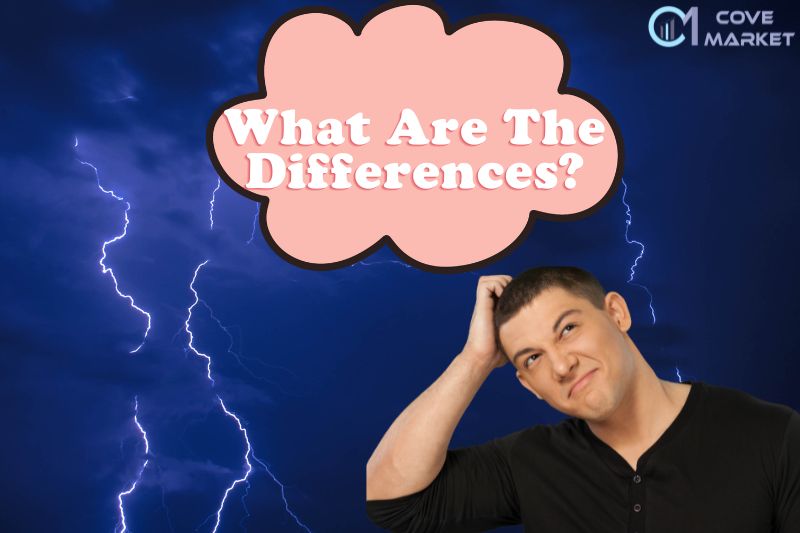
In order to establish the groundwork for a comparison that describes how BandChain compares to Chainlink, we will first examine how it functions at a high level in this article. The following are the comparison’s primary focal points:
Structure
Chainlink
- Oracle Smart Contract: The core of the Chainlink architecture is the Oracle contract. This is a fundamental feature of how Kaleido blockchain networks use Chainlink determines which Chainlink nodes are permitted to respond to job requests
- Client Smart Contract: The primary consumer of the Chainlink Oracle function is naturally an intelligent contract. As described above, a client’s smart contract is not allowed to interact with the outside world.
- Chainlink Node: The workers who complete the desired jobs are chainlink nodes. Any quantity of Chainlink nodes can be connected to the blockchain network. Since peer-to-peer networking does not exist among chainlink nodes, they operate independently of one another.
Band Protocol
- An oracle platform called Band Protocol was created to gather and link real-world data, APIs, and smart contracts. It attracted minimal developer attention and eventually saw no acceptance on the mainnet. Less than a year later, the main Band v2 development team gave up on it.
- Band v2, also known as BandChain, is an oracle network operating on its own blockchain based on Tendermint (using the Cosmos SDK). Guanyu is the name of both of the BandChain versions that Band has released.
- The Band Foundation owns seven nodes in the first network, which is a Proof of Authority network. The second network is a Delegated Proof of Stake network.
Read more: Comparison of Two Blockchain Consensus Algorithms: PoW Vs PoS: Which Is Better For You 2023
Data Quality
Band
BandChain only initially offers premium, password-protected APIs; free, low-quality API support is still entirely hypothetical. As a result, developers are unable to simply call any password-protected API they choose.
The proposed strategy would severely restrict the amount of data that is accessible to consumers by requiring data providers to completely alter their business models in order to accept on-chain bitcoin payments.
Chainlink
Any data source API now in use, including open, free APIs, commercial, authenticated APIs, and private, proprietary APIs, can be connected to natively using Chainlink
All of this is made possible through modular external adapters, which anyone may build and host without further assistance from the Chainlink team or the data providers themselves.
Reliance on Randomness
Band
Despite the fact that the feature is unsupported by any original academic study, randomness was built into the protocol as a key component and is the only way oracle nodes may be selected.
Not only does it severely restrict network security (every node must trust every other node) and data accessibility (every node must have access to the same data), but the team is also largely incompetent on the subject as evidenced by the fact that they were caught trying to copy Chainlink VRF on their Github report.
Chainlink
By excluding randomness from its fundamental design, it gives users a great deal of freedom in their node selection and quality control procedures.
As an innovative method for developing a provably fair on-chain source of randomness for blockchain games and NFT dApps, they designed Chainlink Verifiable Randomness Function (VRF), which is supported by pioneering and original academic research.
Adoption Metrics
Band
Despite Band v1 being active on Ethereum for almost a year, there is barely any usage in production on the mainnet.
Band v2 cannot protect a significant amount of value that is locked in the DeFi economy since it lacks fundamental functionality that customers need, does not have a network effect, and cannot provide any case studies that demonstrate this.
Chainlink
Through its various live Price Reference Feeds, it currently protects tens of billions of dollars in value on the mainnet for top-ranked DeFi projects.
Due to its groundbreaking work on VRF, it is the most popular oracle for DeFi, blockchains, and gaming, and it has a pipeline for 400+ project integrations.
Resource Efficiency and Network Design
Band
Their oracle is built on its own blockchain, where oracle nodes are required to perform secondary jobs of being block producers/validators of BandChain, which adds no value to the oracle’s job of data delivery. As such, nodes experience high operating costs due to growing state bloat and long sync times as time progresses.
Chainlink
Because Chainlink is not and never will be a blockchain, nodes only serve as oracles for data transmission and not for the creation or validation of blocks.
Nodes may be spun up and used right away because they are very light and don’t need state processing or synchronization.
Decentralization
Band
The maximum throughput is constrained by the need that all data requests and responses pass via BandChain, a single blockchain. According to Tendermint BFT consensus’s constrained scaling, it has a maximum of 100 nodes.
Chainlink
Any blockchain, DLT, or layer 2 solution can support an infinite number of oracle networks running natively in parallel, obviating the requirement to route data requests and responses through a single chain.
With the upcoming threshold signatures and off-chain aggregation enhancements, there is no upper limit on nodes.
Multi-Chain Support
Band
Relies on a Cosmos IBC that has not yet been released in order to natively bridge data to other blockchains.
Since there are no known incentives or punishments for their performance, it presently only supports lite clients, which need data to be given by unidentified outside the protocol third parties.
Chainlink
Natively supports the top leading blockchains such as BEP20, Ethereum (ERC20) through modular external adapters, external initiators, core contract deployments, and token bridging. Nodes directly deliver their data to request contracts on any blockchain, minimize hops, and ensure timely delivery.
Read more: BEP2 vs BEP20 vs ERC20: Which Is The Best Choice For You 2023?
Purpose of the cryptocurrencies
- LINK cryptocurrency is used to pay for Node Operators in ChainLink’s network. Node Operators are responsible for retrieving and formatting data from off-chain data into readable data on the Blockchain.
- BAND is used to serve as the data layer of the Web 3.0 ecosystem. It supports real data transfer to smart contracts.
Read more: TOP 10 Best Web 3.0 Coins To Trade &HODL In 2023: A Full Guidance For Crypto Traders
Market capitalization
| Band Protocol | Chainlink | |
| Market cap (USD) | 46,748,593 | 3,289,535,199 |
| Rank | 405 | 23 |
| Circulating Supply | 35,191,821.00 BAND | 491,599,970.45 LINK |
| Total Supply | 100,000,000 | 1,000,000,000 |
Price
| Band Protocol | Chainlink | |
| Price (USD) | 1.328 | 6.990 |
| 24h volume | $10,369,170 | $307,061,158 |
Staking
Chainlink
LINK staking’s primary goal is to enable ecosystem users, such as node operators and community members, to strengthen the security assurances and user assurances of oracle services by supporting them with staked LINK tokens.
By staking LINK, the ability of nodes to get jobs and earn fees on the Chainlink network will be enhanced while the entire ecosystem will benefit from “enhancing crypto-economic security and ensuring tell users. The current APY rate of LINK is 3.15% annually.
Band Protocol
A number of third-party wallet partners, like IBC Wallet, Atomic Wallet, Math Wallet, and others, allow users to stake BAND.
Depending on the proportion of tokens committed throughout the entire ecosystem, BandChain will generate BAND at a dynamic annual inflation rate ranging from 7% to 20% with each block produced.
Despite the fact that the annual yield varies, a 19.3% annual staking yield is implied by a 70% stake ratio. The Band Staking Calculator allows you to determine the current payouts.
Read more:
- APR Vs APY Crypto 2023: What Are The Differences And How To Calculate For Crypto Beginners
- TOP 20+ Best Staking Coins To Trade & HODL In 2023: A Full Guidance For Crypto Traders
Backers
Band Protocol
- The project is backed by Sequoia, a leading American venture capital firm. Sequoia Capital has invested in companies such as Apple, Google, Oracle, PayPal, and Yahoo.
- Band Protocol is also backed by another top venture capital firm – DCM Ventures.
Chainlink
LINK is embarking on cooperation with many major partners. According to statistics, there are 64 partners in many different industries. Among them are Google, SWIFT, Web3, Oracle, Oracle StartUp, IC3 partner, Polkadot, etc.
Read more: Polkadot Vs Cosmos: DOT Vs ATOM. Which Crypto Is Better In 2023 Full Comparision
Future Projection
Band Protocol
- BandChain v2.0: This is a major upgrade to the BandChain network. It will improve performance and security, as well as introduce new features such as staking and cross-chain compatibility.
- Oracle Marketplace: This is a marketplace that will allow developers to find and use Oracles for their applications. It will provide a way for developers to monetize their Oracles, and will also allow them to find Oracles that they can trust.
Chainlink
Chainlink’s team is working on a new project, Chainlink Virtual Machine (CLVM). It will bring smart contracts to CLK. The aim of the CLVM is to provide a decentralized way to execute smart contracts. The CLVM will be implemented on top of the Ethereum Virtual Machine (EVM).
At a Glance
| Cryptocurrency Network | Chainlink | Band Protocol |
| Native Currency | LINK | BAND |
| Founder | Sergey Nazarov and Steve Ellis | Soravis Srinawakoon |
| Market Cap | Approximately $3.3 billion as of Aug. 31, 2023, | $46,748,593 |
| All-Time High | $52.88 on May 10, 2021, | $23.19 94.18% on Apr 15, 2021 (a year ago) |
| All-Time Low | $0.1482 on Nov 29, 2017, | $0.2042 561.64% on Nov 25, 2019 (3 years ago) |
BAND vs LINK: Which Is a Better Investment?
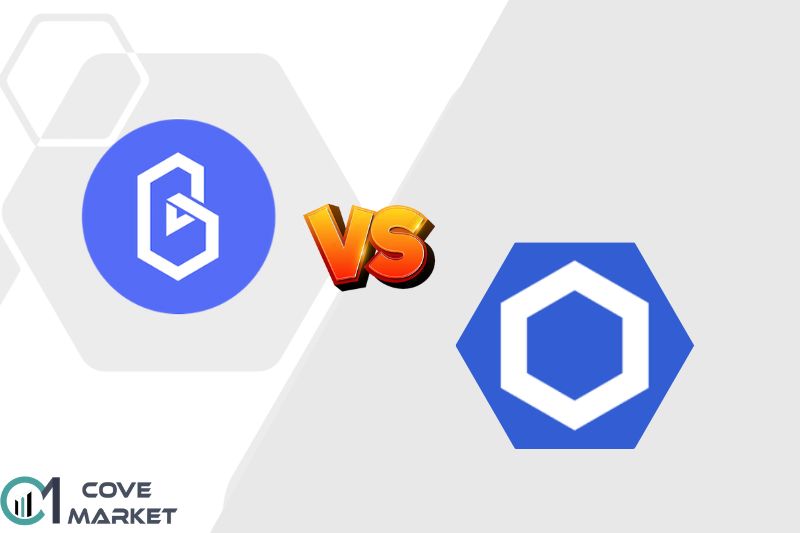
Despite having essentially identical capability, the Band protocol is more user-friendly, interoperable, and quicker. Additionally, data providers can pay for the provision of their data with native tokens.
BAND has the potential to outperform LINK in the long run as a blockchain oracle and is currently at a cheap price where you can buy a lot of it. Its limited availability will eventually cause its price to increase.
This is in addition to its support for various blockchains and eco-friendliness. LINK is the place to go if you want something reliable and secure. However, choose BAND if you’re looking for a long-term investment choice.
Where to buy BAND and LINK?
- BAND: Several centralized cryptocurrency exchanges, such as Coinbase, Binance, Huobi, and Binance, as well as other exchanges, offer BAND. US and decentralized marketplaces like Uniswap and Kyber Network
- LINK: can be bought on several cryptocurrency exchanges, including Binance, Huobi Global, OKEx, Upbit, and Kraken.
Read more: Coinbase vs Binance: Which Crypto Exchange is Best?
FAQs
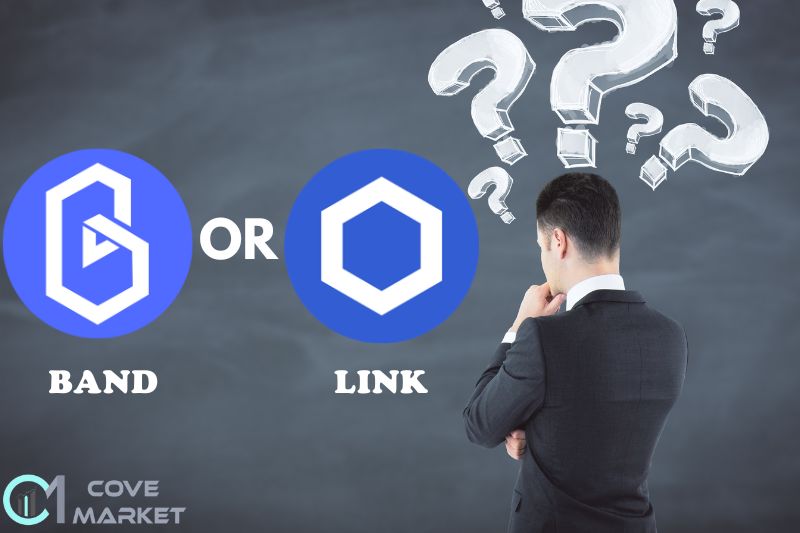
Which one should I choose?
The Band protocol is more user-friendly, interoperable, and quicker. Band is limited to 100 million units, whereas the total and maximum supply of LINK is 1 billion.
Which one is the best coin?
Given everything that has been said thus far, it is obvious that Band Protocol triumphs over Chainlink. Of course, Chainlink offers advantages over Band in terms of security and data stability in addition to efficiency and cost savings.
Is Band Protocol or Chainlink more popular?
Band Protocol is more popular becauseThe “BandChain 2” version of Band Protocol, the second-largest blockchain data provider after market leader Chainlink, has gone live.
Why are they so popular?
They are both built on Ethereum and are thus compatible with each other and with the many other Ethereum-based projects out there.
Where can I learn more about them?
There is a lot of information available online about both Band Protocol and Chainlink on website named covemarkets.com
Conclusion
Given everything that has been said thus far, it is obvious that Band Protocol triumphs over Chainlink. Of course, Chainlink offers advantages over Band in terms of security and data stability in addition to efficiency and cost savings.
However, because they support many dApps and employ various models, both oracle networks are likely to succeed in the end. Chainlink is still a solid option for projects that can wait a little while longer for the required information, while Band is the best choice for projects that need speed.
Disclaimer: The information provided in this article is not investment advice from Cove Markets. Cryptocurrency investment activities are yet to be recognized and protected by the laws in some countries. Cryptocurrencies always contain financial risks.
What Is The Different Between Web2 Vs Web3: The Future Of The Internet?
TOP 10 Best ERC20 Coins To Trade & HODL In 2023: A Full Guidance Of Potential Crypto For Traders

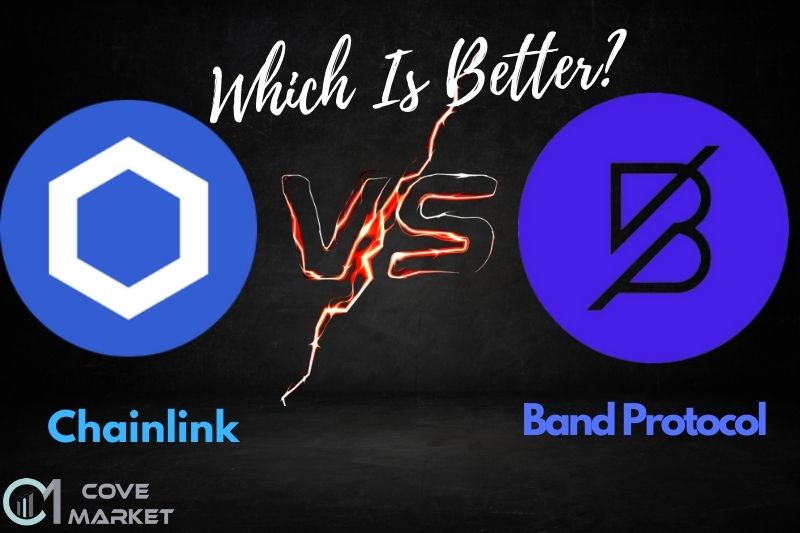
Very goopd post!We arre linkijg too this great conten oon ouur site.
Keepp up the great writing.